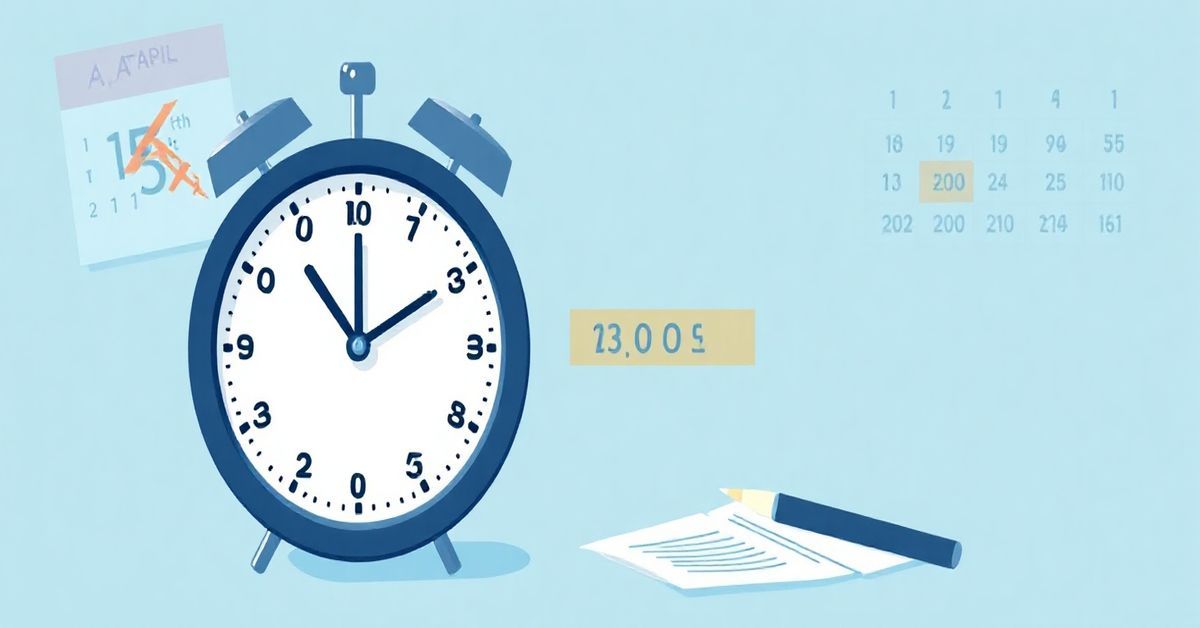What is Form 4868: The Automatic Extension Form Explained
Okay, so tax season is here, and you’re feeling a little overwhelmed? Don’t worry, you’re not alone. One thing the IRS offers is a little breathing room with Form 4868. Think of it as a “pause button” for your taxes. But it’s essential to know what it does and doesn’t do. Let’s break it down in plain English.
Why Would You Need an Extension?
Life happens, right? Sometimes getting all your tax documents together can take longer than expected. Maybe you:
- Are waiting for some crucial tax documents, like a W-2 or a 1099.
- Are dealing with a major life event like moving, starting a new job, or getting married.
- Are self-employed and still gathering all your business expenses.
- Are just simply overwhelmed and need some extra time to get things organized.
Whatever the reason, Form 4868 can be a lifesaver to help you avoid late filing penalties.
The Mechanics of Form 4868: How Does It Work?
It’s All About Timing
The most important thing to remember about Form 4868 is that it extends your filing deadline, not your payment deadline. The usual tax deadline is April 15th (or the next business day if it falls on a weekend or holiday). Filing Form 4868 before that date automatically gives you an additional six months, typically until October 15th. That means you now have six extra months to get your return ready, without worrying about a late filing penalty.
Not a Free Pass: Payment Still Due
Even with the extension, you are still required to pay your estimated tax liability by the original April deadline to avoid penalties and interest. The IRS expects you to make a reasonable estimate of your taxes and pay that amount. If you don’t pay enough by the original deadline, you may still owe penalties and interest, even with a filing extension.
How to File Form 4868
Thankfully, filing for an extension is quite straightforward. You can do it in a few different ways:
- Electronically: The easiest option is to file it online using tax software or through a tax professional.
- Paper Form: You can download Form 4868 from the IRS website, fill it out, and mail it in.
- Phone Payment: If you’re only requesting an extension because you’re making a tax payment, you can make that payment through the IRS’s online payment portal or through a phone payment and select the “Extension” option.
What Information Do You Need?
You’ll need some basic information to complete Form 4868:
- Your name, address, and social security number (or your spouse’s if you’re filing jointly).
- Your estimated total tax liability for the year.
- The amount you plan to pay with the extension request.
- Payment information
It’s crucial to use the correct name, social security number, and address, just as they are listed on your official IRS documents to avoid processing delays.
Who Can Use Form 4868?
This form is for individuals who file a U.S. individual income tax return (Form 1040). If you file as a sole proprietor, single individual, or joint filer, you’re likely eligible to use Form 4868.
However, if you’re a corporation, partnership, or other type of business entity, you’ll need to look at different forms for extensions. Generally, businesses use Form 7004 for extensions.
Common Mistakes and Misconceptions
There are a few common mix-ups people make with Form 4868:
- Thinking it’s a Payment Extension: Again, this is not a payment extension. The deadline to pay your taxes is still the original tax deadline, even if you’re filing for an extension.
- Waiting Until the Last Minute: Try to file your extension earlier, rather than right on the April 15th deadline. If you mail it, give it extra time to arrive at the IRS.
- Not Paying an Estimated Amount: A lot of people think they don’t need to pay anything when filing for an extension. It is best to pay an estimated amount of what you believe you will owe to avoid interest and penalties.
- Not Filing at All: If you don’t file an extension before the original deadline and you also do not file your tax return, then you could face steep penalties for both failing to file and for failing to pay your taxes on time.
- Forgetting the Payment Even if you send in Form 4868, you still need to make sure your tax payment is sent in by the original tax deadline. Don’t forget that step!
Tips and Strategies for Using Form 4868
- Estimate Your Taxes Carefully: While you don’t have to be spot-on, you should try to make a realistic estimate of your tax liability. Use last year’s return as a reference, if it’s applicable. If you drastically underestimate your tax liability, you could end up owing interest and penalties later.
- Pay What You Can: If you can’t pay your full estimated tax, pay as much as possible by the original deadline to minimize potential interest and penalties.
- Use the IRS Website: The IRS website has great resources and tools to help you calculate your tax liability and make payments.
- Seek Professional Help: If you’re unsure about anything or have a complex tax situation, consider consulting a tax professional. They can offer personalized advice and ensure you are making the right decisions.
Form 4868: Your Friend, Not Foe
Think of Form 4868 as a useful tool in your tax toolkit. If you need more time to file your return, it’s there for you. Just remember, it’s not a free pass on payment, so always try to pay your taxes on time or make a payment with the extension if you have to file the extension. Using it correctly will give you some peace of mind during the tax season. This way, you can focus on making sure your return is accurate rather than rushing to get it filed by April 15.

